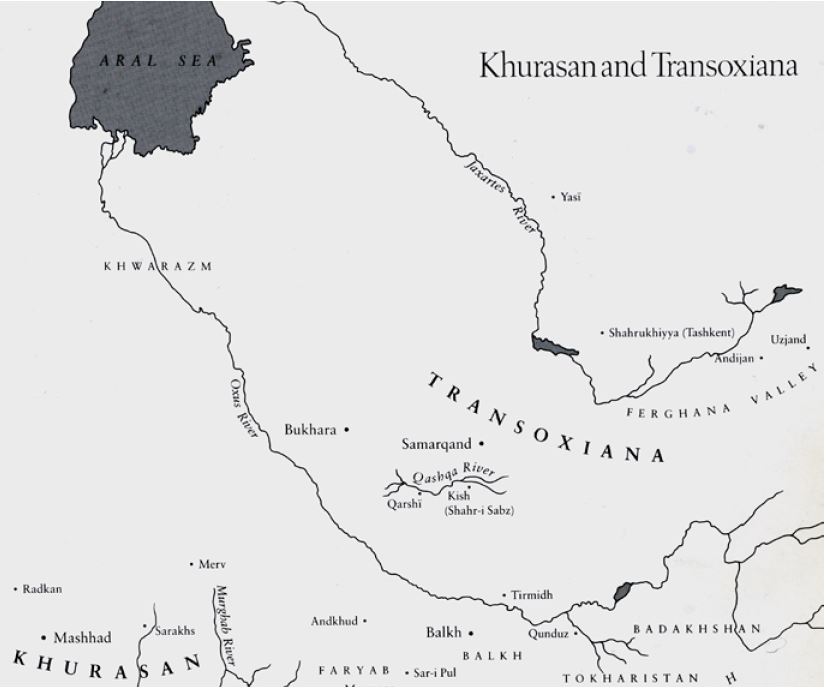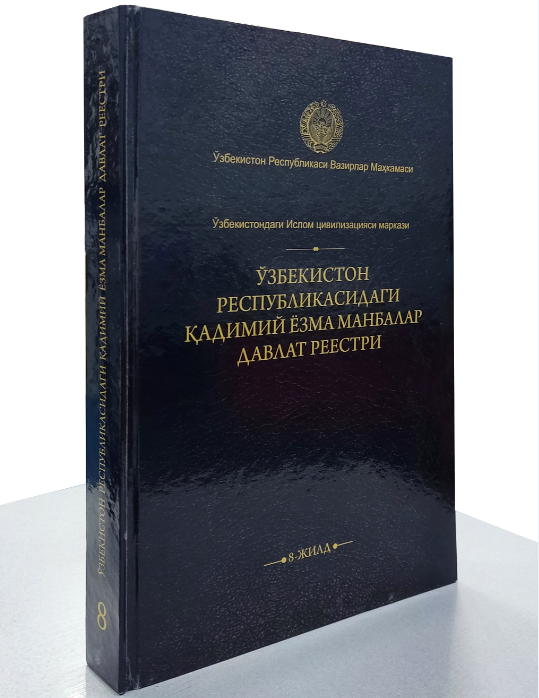About continuity in art
Back in the first half of the 20th century, the art of Uzbekistan, whose territory stretched between two mighty rivers of Transoxiana, called in ancient times Yaksart (Syr Darya) and Oks (Amu Darya), was not included in generalizing works on the history of culture and art of the Ancient East as an independent object of research. Extensive archaeological, historical and art studies of the 20th - early 21st centuries make it possible to speak about the significant role of this region in the development of civilizations of the ancient world.
Uzbekistan is the middle zone of the Central Asian civilization. Natural and climatic conditions between the Amu Darya and Syr Darya rivers led to the emergence of settled agricultural cultures and early forms of civilizations in this region, which served as the basis for the formation and development of ancient, medieval and modern state formations on the territory of Uzbekistan. The presence of a symbiosis of various Then the art historian Pevzner reproached the authors of the History of Arts of Uzbekistan (Pugachenkova, Rempel, 1965) and the book
Art of Turkmenistan (Pugachenkova, 1967) in an attempt to show the development of art in the region closed, within their modern political and administrative boundaries (Pevzner, 1971). The position of Pevzner was also adhered to by the Moscow scientist Stavisky, who considered the definition of Pugachenkova and Rempel, noting that there was no such state as Uzbekistan in antiquity and the Middle Ages, and it would be more correct to use the term “History of the Arts of Central Asia”. Rempel argued with him and published his article in the same journal (Rempel, 1972). Without denying the legitimacy of the regional approach, Uzbek scientists defended the republics’ right to their own history of artistic culture within the framework of the state formations that developed in the 20th century (Pugachenkova, Rempel, 1979). It would seem that the acquisition of state independence by Uzbekistan and other republics of the region put an end to this dispute.
However, in the mid-1990s, Stavisky again repeated his previous statements about the illegality of considering the art of Central Asia only within the framework of modern state formations (Stavisky, 1997). And again Pugachenkova responded, developing her previous approaches taking into account the new historical realities — the gaining by the states of the region of independence (Pugachenkova, 1998). Ultimately, the independence of the Central Asian countries and the imperative for the creation of national art histories by the Central Asian countries made this discussion inappropriate. However, this example shows that the experience of achieving objective scientific truth was not easy.
At the end of the 20th century, Uzbekistan entered the world orbit as an independent subject of international law, as a sovereign state. This unprecedented event defined a new page in the historical development of the peoples of Uzbekistan and set important tasks for the humanities. New aspects have emerged in the study of the artistic heritage in its interaction with the process of formation of state formations on the territory of Uzbekistan. The historiography of the art of the peoples of Central Asia, including Uzbekistan, is quite extensive. Generalizing works on the history of art have been created, attention is paid to the problems of the development of fine and applied art of the 20th century. At the same time, the history of the arts of Uzbekistan in Soviet historiography was for the most part viewed as a mechanical combination of different eras, schools of art and artistic styles. So, in one of the aforementioned fundamental works on the history of the arts of Uzbekistan, the historical line of development of art is interrupted by the end of the 19th century (Pugachenkova, Rempel, 1965). and the art of the 20th century was considered as an independent stage in the history of art (Art ... 1976).
In the period of independence, the concept of the historical development of art in Uzbekistan receives a new interpretation - it is considered as a single historical and artistic process. This point of view was defended by the author of this book in his generalizing works on the history of art of Uzbekistan (Khakimov, 2010; Khakimov, 2018).
This holistic approach to the national history of art is also the fundamental feature of this publication — the art, architecture and crafts of Uzbekistan are presented in it as a single historical and artistic phenomenon — from ancient times to the present. Revealing an unbreakable line of continuity in the historical development of the art of Uzbekistan and features of originality, both in the general movement of art and in the individual creative searches of artists of the past and present, has become the core idea of this book. Thus, the internal unity of the artistic phenomenon and the historical continuity of traditions do not exclude the unconditional originality of the national art of Uzbekistan at various stages of its development. On the contrary, all the art of Uzbekistan developed in the unity of diversity. It absorbs the processes of adding new styles and schools of art associated with historical transformations, dynamic changes in the composition and repertoire of themes and plots, but retains the inner mental integrity and recognizability of emotions and ideas. This determined the structure of the book, consisting of an analysis of the main stages in the development of art in Uzbekistan.
The history of art in Uzbekistan has its own stratigraphy. There are large epochs, which, in turn, consist of more fractional periods. This chronological feature of the history of art of Uzbekistan is as follows - 5 main eras are highlighted
- 1) the art of antiquity — 4th millennium BC up to 3rd - 4th centuries. AD;
- 2) the art of the early Middle Ages – 5th- 8th centuries;
- 3) the art of Islamic time 9th – early 20th centuries;
- 4) the art of Uzbekistan in the 1920s-1980s, when the republic was part of the USSR;
- 5) the art of independent Uzbekistan (from 1991 to the present).
Of the above eras, the longest and, accordingly, consisting of several periods are «The Art of Antiquity (4th millennium BC to the 3rd – 4th centuries AD)» and «The Art of Islamic Time». The buffer era for the two mentioned global periods is «Art of the Early Middle Ages — 5th -8th centuries.»
The art of antiquity includes several periods:
- a) “Art on the territory of Uzbekistan in ancient periods and in
the Bronze Age (Neolithic, Bronze Age, proto-city culture – 4th-1st millennium AD);
- b) The art of the period when the culture of the region entered the
orbit of the Achaemenid influence — 6th- 4th centuries BC.;
- c) Art of the Greco-Hellenistic period of the 4th – 2nd centuries. BC.;
- d) Art of the Kushan era (1st century BC – 3rd century AD). The art
of antiquity section as a separate
The art of Islamic time is determined by the 9th - early 20th centuries. This era was marked by the formation and development of a new ornamental style. Within this millennial era, there were stages of development:
- a) Art of pre-Mongol time — 9th - early 13th centuries;
- b) Art of Temurid time — 14th - early 16th centuries;
- c) The art of the Uzbek khanates and the Turkestan region — 17th -early 20th centuries.
A relatively short period covers the «Art of Uzbekistan 1920-1980s,» the main criterion and artistic principle of which was the method of socialist realism, based on class ideology. A new page in the history of art of Uzbekistan is opened by the period of independence — from 1991 to the present, aimed at creative self-expression and adequate reflection of the national identity of the Uzbek people.
For the art of pre-Islamic times, it was important to show the inner world of images of antiquity and the early Middle Ages, their emotions and feelings, in which one can find the thrill of vital energy conveyed to us thanks to the skill of ancient artists and sculptors. In the segment of Islamic art, it was important to reveal the philosophy and magic of the aesthetics of ornament, which has become the universal language of applied art throughout more than a thousand years of art history in Uzbekistan.
Contemporary art was considered taking into account the influence on its style and originality of historical and political transformations, as well as from an understanding of the internal tasks of art and the individual preferences of artists. Filiation of ideas and forms: a different vision for a deeper understanding of the artistic language of art and the inner world of images at different stages of the history of art in Uzbekistan, in the design decisions of the book, close-ups and spreads were used with an enlarged display of portrait images or ornamental details. This is an important semantic device and brings the reader closer to the world of plots and images presented in the publication. The inclusion of textual comments of a poetical and philosophical nature to individual artifacts and pictorial motives helps to convey to the reader the ideas of both masters of the past and contemporary artists The cultural-philosophical approach allows us to strengthen the aesthetic context of the interpretation of the history of art in Uzbekistan.
Poetic symbolism as a technique of historical comparison opens up a world of emotions that envelops the spiritual space of an object.
This vision of art complements the descriptive-protocol and academic approach, allows you to see in inorganic artifacts, the living tissue of human emotions and experiences. As Oswald Spengler wrote: “I see in world history a picture of eternal education and transformation, the miraculous formation and transition of organic forms ...” (O. Spengler. 1993, p. 151) We hope that this publication will help the reader to look more closely at the faces of the past and see in the artistic heritage of the Uzbek people the enduring spiritual values that have enriched world culture.
HISTORY OF THE ARTS OF UZBEKISTAN Akbar Khakimov






